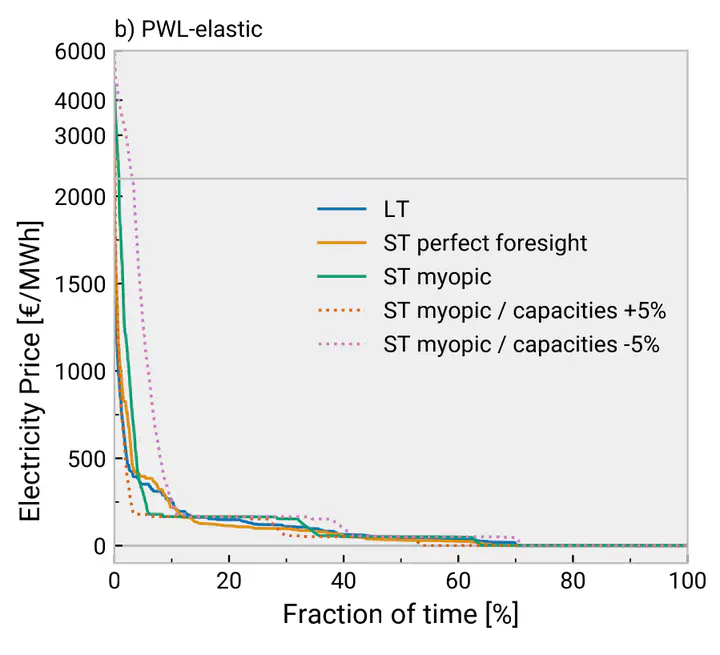Price formation without fuel costs: The interaction of demand elasticity with storage bidding

Abstract
Studies looking at electricity market designs for very high shares of wind and solar often conclude that the energy-only market will break down. Without fuel costs, it is said that there is nothing to set prices. Symptoms of breakdown include long phases of zero prices, scarcity prices too high to be politically acceptable, prices that collapse under small perturbations of capacities from the long-term equilibrium, cost recovery that is impossible due to low market values, high variability of revenue between different weather years, and difficulty operating long-term storage with limited foresight. We argue that all these problems are an artefact of modelling with perfectly inelastic demand. If short-term elasticity to reflect today’s flexible demand (-5%) is implemented in the model, these problems are significantly reduced. The combined interaction of demand willingness to pay and storage opportunity costs is enough to produce stable pricing. This behaviour is illustrated by a model with wind, solar, batteries, and hydrogen-based storage, where the price duration curve is significantly smoothed with a piecewise linear demand curve. This removes high price peaks, reduces the fraction of zero-price hours from 90% to around 30%, and guarantees more price stability for perturbations of capacity and different weather years. Fuels derived from green hydrogen take over the role of fossil fuels as the backup of final resort. Furthermore, we show that with demand elasticity, the long-term optimisation model exactly reproduces the prices of the short-term model with the same capacities. We then use insights from the long-term model to derive simple bidding strategies for storage so that we can also run the short-term model with limited operational foresight. We demonstrate this short-term operation in a model optimised using 35 years of weather data and then tested on another 35 years of unseen data. We conclude that the energy-only market can still play a key role in coordinating dispatch and investment in the future.